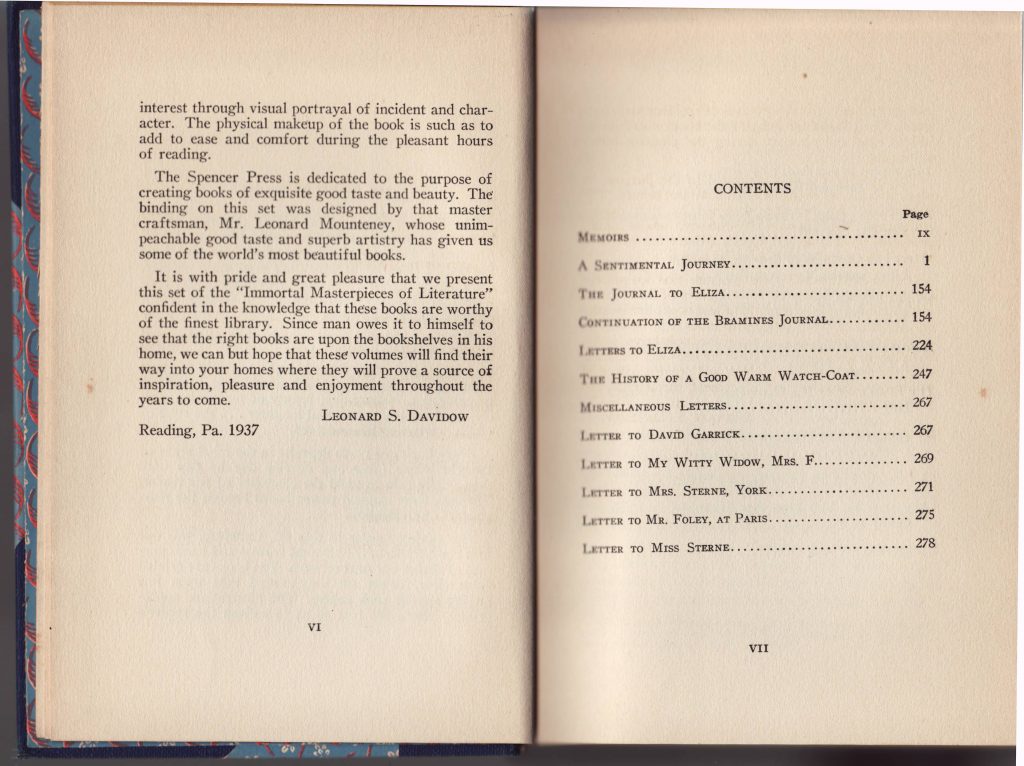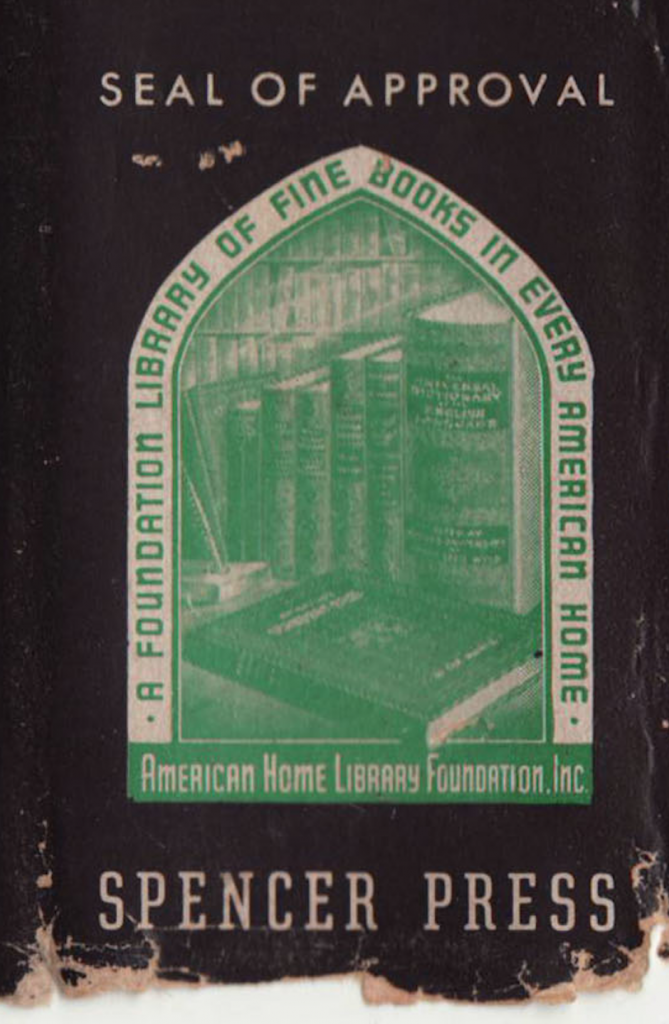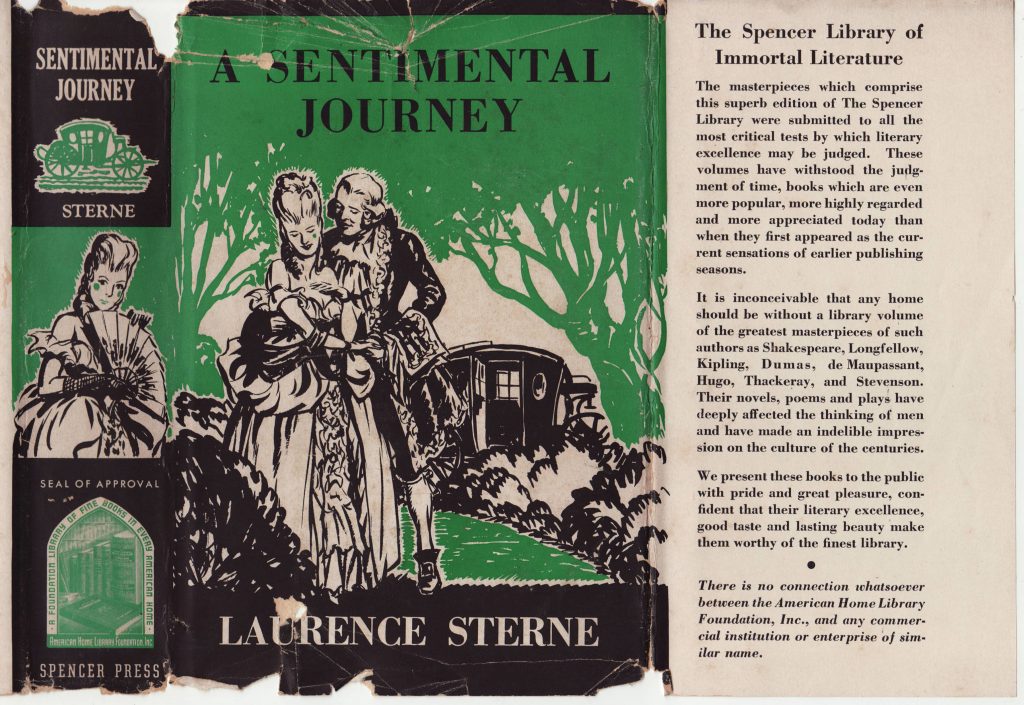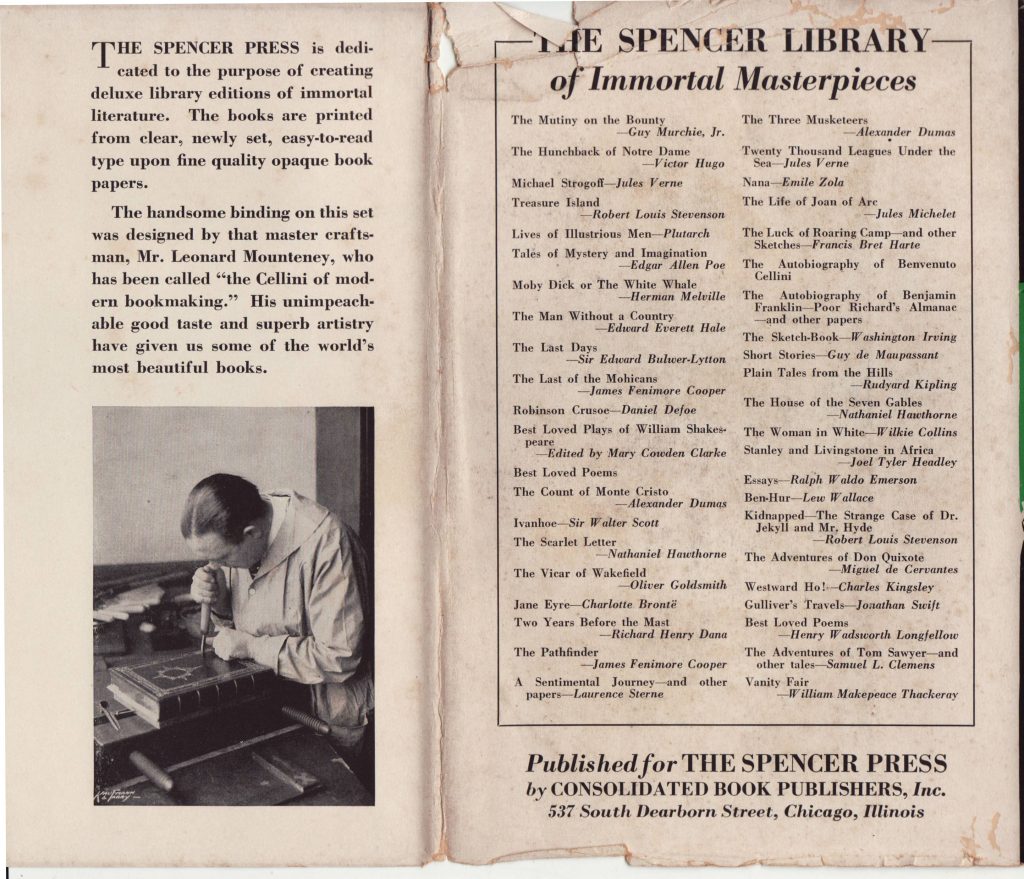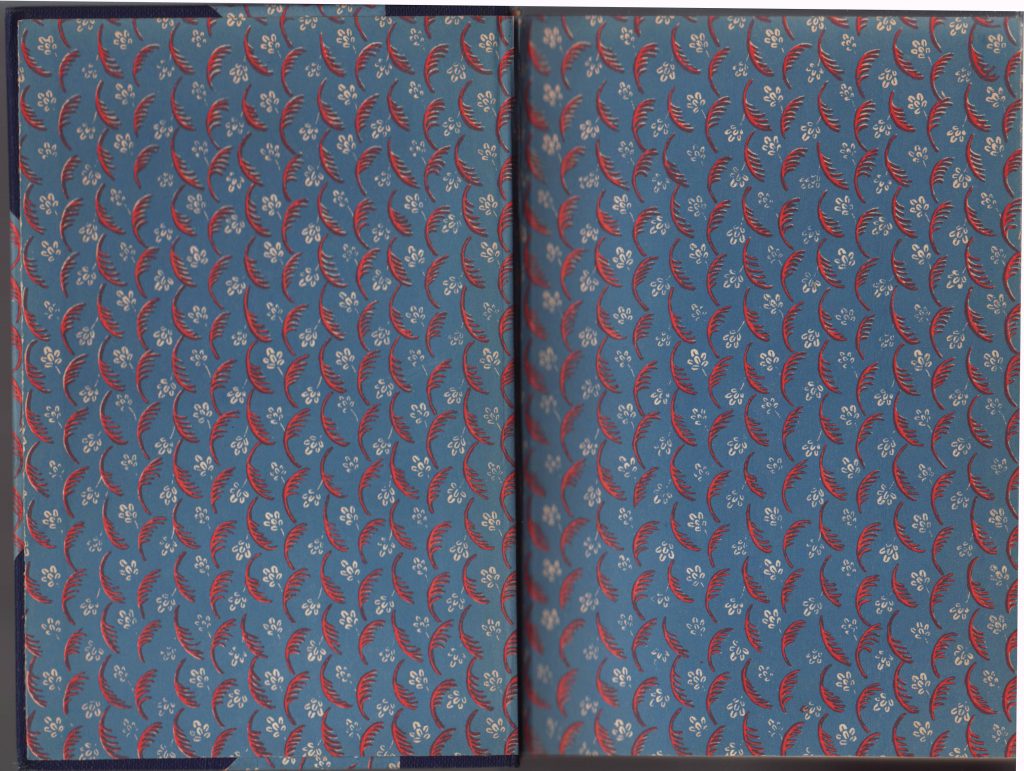aka/ Spencer Library of Immortal Literature
aka/ Spencer Library of Immortal Masterpieces
aka/ World’s Greatest Literature
The Spencer Press / Consolidated Book Publishers, Inc. (Chicago, US)
Series dates: 1936-1941
Size: 5.75″ x 8.25″
Revised 6/5/2023
The Spencer Library of Immortal Masterpieces – also referred to as the Spencer Library of Immortal Literature – was a pre-WW2 illustrated classics series which was sold via subscription and through newspaper offices, such as that of the Sweetwater (Texas) Reporter (see advertisement below). The series is sometimes called World’s Greatest Literature. I believe these are all variations of the same series of books. Later editions seem to have been sold only by mail and did not have a dust jacket.
This is a series published by an interrelated set of firms who pushed the envelope on marketing and sales, to the point that two Federal Trade Commission rulings were filed against them. Selling musty old out-of-copyright classics could be lucrative if one only had the right spin.
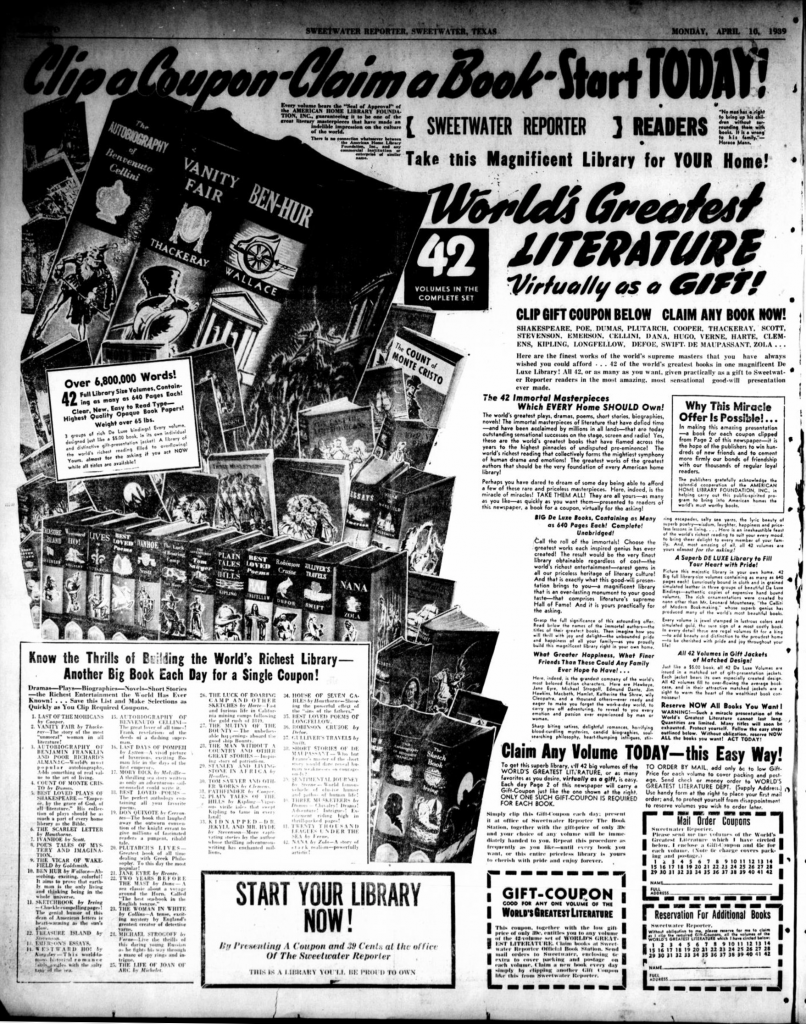
The Spencer Library titles were published for the Spencer Press (of Reading, PA) by the Chicago-based Consolidated Book Publishers, Inc.
Consolidated Book Publishers, Inc. has its origins sometime in the 1920s, as an encyclopedia publisher. Their early business efforts were focused on a dubious scheme that resulted in a Federal Trade Commission lawsuit in 1931 (No. 4423, 1931: source). The firm published what they titled the Times Encyclopedia and Gazetteer and sent out mailers (in the Midwest and the northeastern US) under the name of the “World Wide Educational Service.” The encyclopedias were free, all the respondent had to do was sign a contract, after a visit by a salesman, for a 10-year membership in the organization’s “Bureau of Research” whereby a member could have any question answered, by mail, “on every subject” by “its staff of competent editors, all expert in their particular fields.” The 10-year service, with the free encyclopedias, cost $33.20.
Alas, the actual cost of the service was more: members were required to pay the postage to and from the “Bureau of Research” for their submitted questions, and the contract required members to submit .25 cents with a coupon four times a year, to receive a “looseleaf extension service” supplement. Failure to send the .25 cents nullified the contract, and there were no refunds. FTC investigation revealed that there were more than 30 experienced salesmen in the field (many of them apparently women) selling the memberships and that the “Bureau of Research” consisted of an elderly gentleman, the name of Coumbe, paid $40 a week to answer questions, and mail out the looseleaf supplements. The Times Encyclopedia and Gazetteer turned out to be printed from the plates of the previously published People’s Encyclopedia purchased in 1917 by Consolidated and only minimally updated. It was, apparently, full of errors, omissions, and other “glaring defects.” The FTC ordered Consolidated to cease and desist in their scheme, which the firm seemed to have done. Consolidated Book Publishers apparently persevered and began publishing the Spencer Library in 1936, with the Spencer Press.
The Spencer Press seems to have consisted of one individual, Leonard S. Davidow, who “was president of the Berkshire News Company of Reading, Pa., from 1922 to 1938, when he moved to Chicago. There he became president and publisher of Consolidated Book Publishers” (source). Contact from descendants of Davidow indicated the Berkshire News Company distributed New York newspapers to the Reading, Pennsylvania area. In that capacity, Davidow understood there was a market for reading materials among unemployed Americans. This set the Spencer Library idea in motion.
The Spencer Library was, then, a collaboration between newspaperman Davidow, sometimes listed as a literary critic, and Consolidated (who could publish the books). Within two years, Davidow would move to Chicago and take over as president of Consolidated.
The Spencer Library series was typical reprint classics with simple line-drawn illustrations bound to look more or less like what a typical middle-brow book buyer would think a fine bookbinding should look like. The bindings were designed by Leonard Mounteney, a binding and book designer at the Cuneo Press, Chicago. The Cuneo Press printed at least some of the titles in the Spencer Library. Mounteney’s photograph is included on the rear jacket flap (see below).
In addition, the series “is named in honor of and as a tribute to the memory of William Augustus Spencer, … an inveterate book collector, specializing in fine French bindings. He soon became a patron of the fine binders of his day and his collection, now on permanent exhibition at the New York Public Library, is rated as one of the finest of modern collections.” (source).
Finally, the series is affiliated with the “American Home Library Foundation” which is portrayed as a charitable literary foundation, subsidizing the series to promote the reading of the classics. Together, the binding, the series name, and the charitable literary foundation worked to convince potential book buyers that the Spencer Library was an opportunity they could not miss. That’s the spin: to sell copyright-free literary classics with dubious and fraudulent methods to gullible working and middle-class consumers who wanted to be at least perceived as a bit literary and intellectual.
As Consolidated Book Publishers, Inc. was charged by the FTC with fraudulent sales practices in 1931 for the encyclopedia scheme, and, a decade later, for the ruse of the “American Home Library Foundation” used to promote both the Spencer Library and the encyclopedias that the firm continued to sell.
The American Home Library Foundation, ostensibly a charitable foundation subsidizing the Spencer Library series and, thus, accounting for their tremendous value, lent significant legitimacy to the Spencer Library. That foundation name sounds suspiciously like the National Home Library Foundation (Washington, DC), which used donations by successful authors to provide grants for libraries and communities to purchase books. The National Home Library Foundation also published its subsidized classics series, the National Home Library, for .25 cents a copy. The National Home Library Foundation had a sponsored radio series, the Fireside Hour, beginning in 1934, where books in the National Home Library were discussed and offered for sale.
While the National Home Library Foundation was (and still is) a legitimate non-profit organization, it seems that the American Home Library Foundation was merely another corporation, held under the name of one Fred Breismeister and located at the same address as Consolidated Book Publishers, Inc. (540 Plymouth Court, Chicago). Consolidated Book Publishers also listed its address as 537 South Dearborn Street, in Chicago, which is the front part of the building at 540 Plymouth Court. The scheme was to take advantage of the good press the National Home Library Foundation had secured to sell their classics series.
In a Federal Trade Commission ruling in 1941, the Commission ruled against Consolidated Book Publishing in a ruling that included information about the “fake” foundation and deceptive advertising, in the context of encyclopedias being sold by Consolidated. In essence, the books were advertised as an amazing deal because of the subsidies from the American Home Library Foundation. As this was a false claim, Consolidated was told to stop such advertising. (PDF of ruling here). The Spencer Library was being marketed in the same manner. Advertising for both that series and the encyclopedias seem to disappear in the early 1940s.
Curiously, Fred Breismeister’s name comes up in the context of marketing history, as it is he and John Stevenson, through the Greystone Press (who published its own classics series, the Masterworks Library, published for a decade after WW2), are hailed as “pioneers of continuity marketing” – in essence getting people to subscribe to a series of books, typically with one or a few free or very cheap books, which continue to be sent (with a bill) until the subscription is canceled. These efforts led to the firm becoming a direct marketing powerhouse by the 1960s. While these direct marketing Greystone Press titles were issued post-WW2, their ideas were similar to those used to market the Spencer Library series. See the Masterworks Library entry for more information on Stevenson and the Greystone Press.
Breismeister is also given credit for the “discovery” that “long copy works better than short copy” (source). Basically, a big page filled with tiny text and lots of detail seems to reassure consumers that the product being sold is legitimate. The advertisement above, for the Spencer Library series, is a classic example of such an advertisement. It apparently was expected to shock and awe the citizenry of Sweetwater into buying copious numbers of books.
The emphasis on marketing is reminiscent of the Book Collectors’ Association (later, after legal trouble, renamed Personal Books), which used rather officious and scholarly-sounding company names to legitimize their soft-porn publications. The Book Collectors’ Association was part of a group of publishers owned by William J. Robinson, who worked with his old prep school friend, Edward Bernays, the “father of spin” to help market his publications.
In 1943 Consolidated Book Publishers, along with Sears, Roebuck & Co. and Simon & Schuster initiated the People’s Book Club. Membership, which was advertised in the Sears catalogs and in their retail stores, required buying four ($1.66) books per year. The innovation was the book selection process: unlike other book clubs with a committee of literary luminaries, the People’s Book Club used a Gallup Poll for book selection. Most of the titles were contemporary popular fiction, and a few were classics, such as Emerson’s Essays. Members filled out questionnaires about reading interests and personal information that helped Gallup define different audiences, for which particular titles were chosen. Simon & Schuster handled editing and publishing, Consolidated, along with Cuneo Press, the actual book manufacturing, and Sears handled distribution. It seems that Consolidated Book Publishers were an attractive partner in this effort because they had access to a substantial quota of paper – at that time, rationed due to the war effort. This effort seems to have been a turning point for Consolidated, in that future efforts, while still driven by strong promotional efforts, did not stray into the cross-hairs of the Federal Trade Commission. The People’s Book Club was issuing books at least until 1967. (Source: John Tebbel, A History of Book Publishing in the United States, vol. 4, p. 67-68).
Consolidated Book Publishers and The Spencer Press remain affiliated firms in the Chicago area through the 1950s, increasingly focusing on children’s books and an encyclopedia called the American People’s Encyclopedia (which is close to the original name of the encyclopedia Consolidated was selling in the late 1920s). In the late 1950s, they expand into educational recordings, and in 1961 were purchased by Grolier.
The spine of the Spencer Library jacket contains a reference to the faux foundation, the American Home Library Foundation, Inc. The “Seal of Approval” from the faux foundation suggests the books are promoted by a respected and scholarly foundation.
The front of the jacket is illustrated, and each jacket is unique to the titles in the series. This copy of Sterne’s A Sentimental Journey has a copyright (on the illustrations) dated 1937, so the book was probably published around 1937-1941. The series name is included on the front jacket flap, as the Spencer Library of Immortal Literature, along with a prospectus for the series.
A statement at the bottom of the page indicates “There is no connection whatsoever between the American Home Library Foundation, Inc., and any commercial institution or enterprise of similar name.” This may result from the National Home Library Foundation questioning the similarity of this faux “foundation” name to theirs. There is no price on the jacket, suggesting the books were either sold in stores “on sale” or were sold by mail order (or, as with the advertisement above, through newspaper offices). Typically, jackets are not included on books sold only by mail.
The rear of the jacket lists 43 Immortal Masterpieces in the Spencer Library. The World’s Greatest Literature series seems to have been sold in the late 1930s and early 1940s, as shown in the newspaper advertisement near the beginning of this entry. As said before, these seem to be the same books. The advertisement lists 42 titles. I have not cross-checked to see which title is missing from the later advertisement.
The bookbindings are a mishmash of faux-classical design (the fleur-de-lis gold decorations on the spine) and somewhat incongruous quarter binding with fake leather and Curwen Press-inspired repeating pattern paper. Blue, red, gold, and white with crisscrossing materials create an aesthetic sensation.
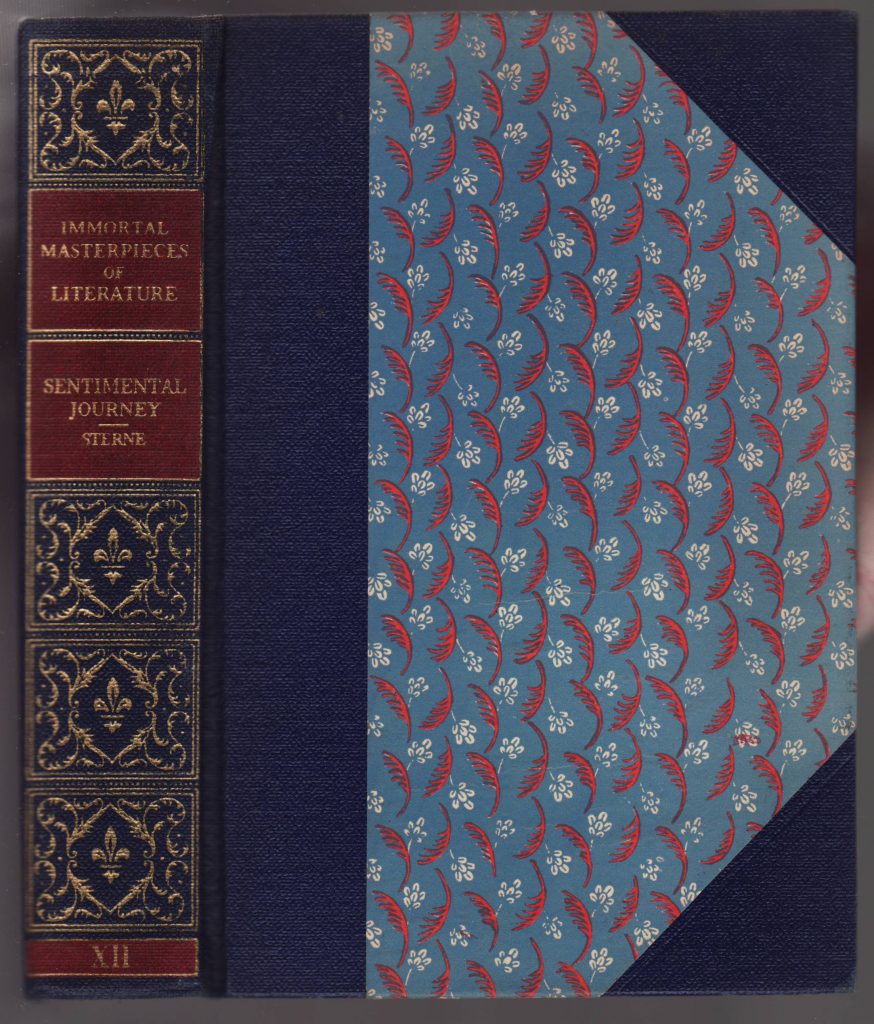
The decorated papers line the endpapers:
One of the simple line drawings, by Thomas Wess, faces the title page. The Title page is topped by the series sub-title (Immortal Masterpieces of Literature), the Spencer Press colophon, and imprint.
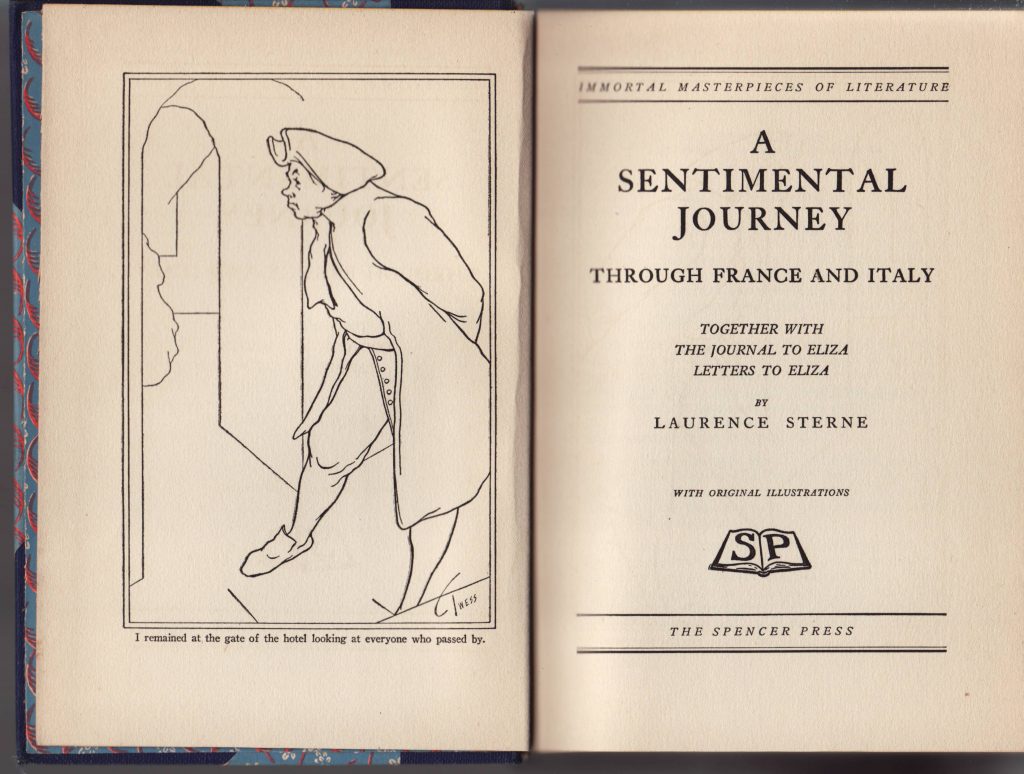
The copyright page includes a statement of copyright ownership on the illustrations. The book was manufactured by the Cuneo Press, Inc. in Chicago. Cuneo also employed Leonard Mounteney, the master binder who designed the books. An introduction to the Spencer Press lauds its commitment to the best literature and the best book design and production.

The introduction to the series is signed by Leonard Davidow, president of Spencer Press (and future president of Consolidated Book Publishers), from Reading, PA, and dated 1937.
